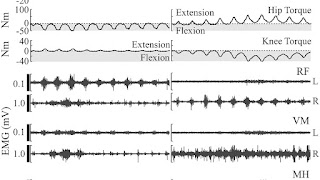
The knee examination, in medicine and physiotherapy, is performed as part of a physical examination, or when a patient presents with knee pain or a history that suggests a pathology of the knee joint.
The exam includes several parts:
- position/lighting/draping
- inspection
- palpation
- motion
The latter three steps are often remembered with the saying look, feel, move.

Maps, Directions, and Place Reviews
Position/lighting/draping
Position - for most of the exam the patient should be supine and the bed or examination table should be flat. The patient's hands should remain at his or her sides with the head resting on a pillow. The knees and hips should be in the anatomical position (knee extend, hip neither flexed or extend).
Lighting - adjusted so that it is ideal.
Draping - both of the patient's knees should be exposed so that the quadriceps muscles can be assessed.
Knee Injury Tests Video
Inspection done while the patient is standing
The knee should be examined for:
- Baker's cyst
- genu recurvatum
- Valgus deformity (knock-kneed)
- Varus deformity (bowlegged)
- Gait - antalgic gait?

Inspection done while supine
The knee should be examined for:
- Masses
- Scars
- Lesions
- Signs of trauma/previous surgery
- Swelling (edema - particular in the medial fossa (the depression medial to the patella)
- erythema (redness)
- Muscle bulk and symmetry (in particular atrophy of the medial aspect of the quadriceps muscle - vastus medialis)
- Displacement of the patella (knee cap)

Palpation
An inflamed knee exhibits tumor (swelling), rubor (redness), calor (heat), dolor (pain). Swelling and redness should be evident by inspection. Pain is gained by history and heat by palpation.
- Temperature change - using the back of the hand one should feel the temperature of the knee below the patella, over the patella, and above the patella. Normally, the patella is cool relative to above and below the knee. A complete exam involves comparing the knees to one another.
- joint line tenderness - this is done by flexing the knee and palpating the joint line with the thumb.
- Knee effusions, test for
- Patellar tap - useful for large effusions
- Ballottement - defined as a palpatory technique for detecting or examining a floating object in the body
- Bulge sign - useful for smaller effusions

Motion
The patient should be asked to move their knee. Fully range of motion is 0-135 degrees. If the patient has full range of motion and can move their knee on their own it is not necessary to move the knee passively.
- examination of crepitus - clicking of the joint with motion
Ligament tests
- Anterior drawer sign - tests the anterior cruciate ligament (ACL)
- Posterior drawer sign - tests the posterior cruciate ligament
- Lachman test (ACL)
- Valgus Stress - tests the Medial collateral ligament
- Varus Stress- tests the Lateral collateral ligament
Meniscus tests
- McMurray test
- medial meniscus is tested by external rotation + lateral force (mnemonic Mel)
- lateral meniscus is tested by internal rotation + medial force
- Apley grind test
Additional Tests
- Clarke's test may be used to examine for patello-femoral pain
- The Wilson test is a test used to detect the presence of osteochondritis dissecans in the knee.
Source of the article : Wikipedia


EmoticonEmoticon